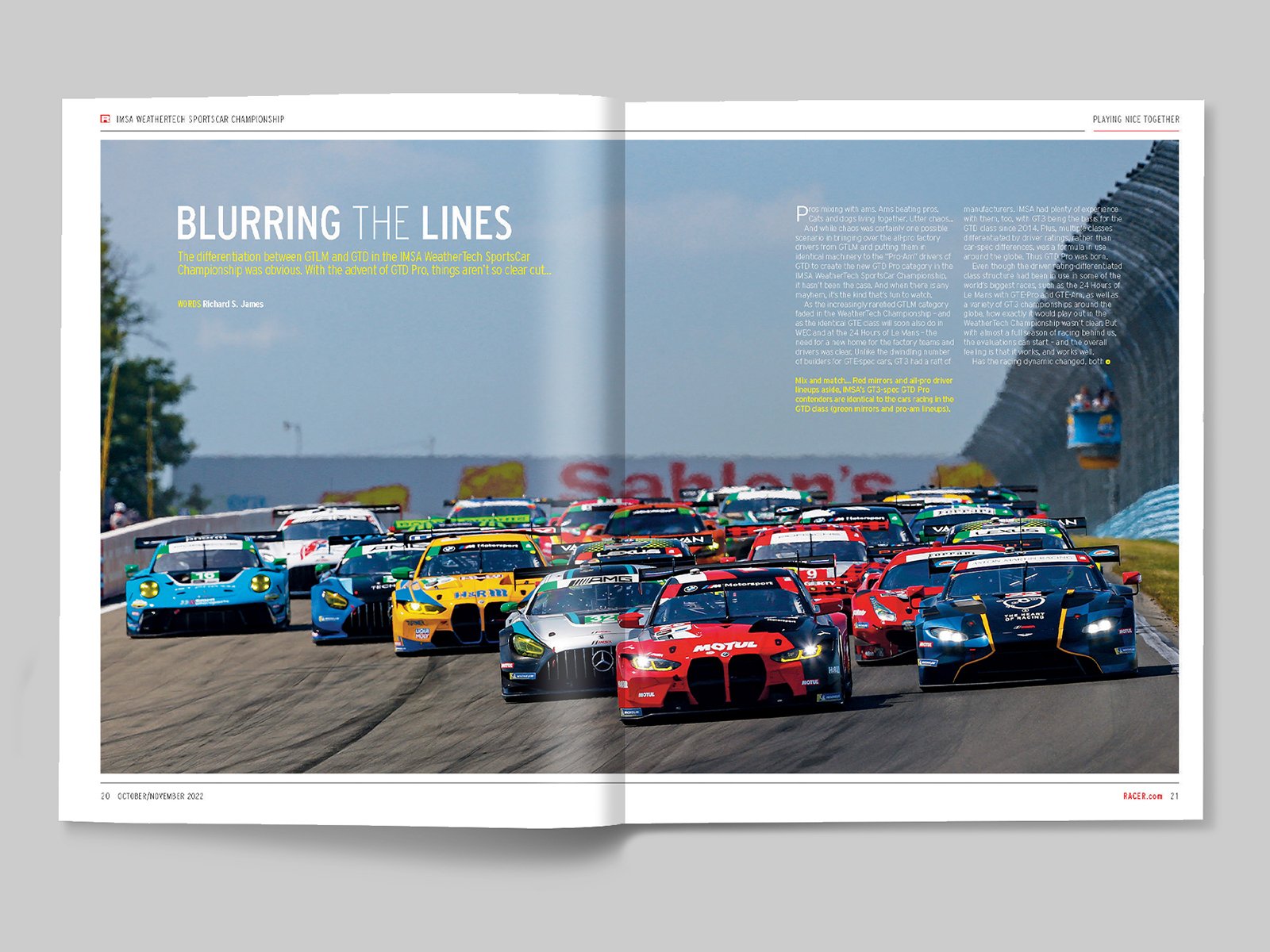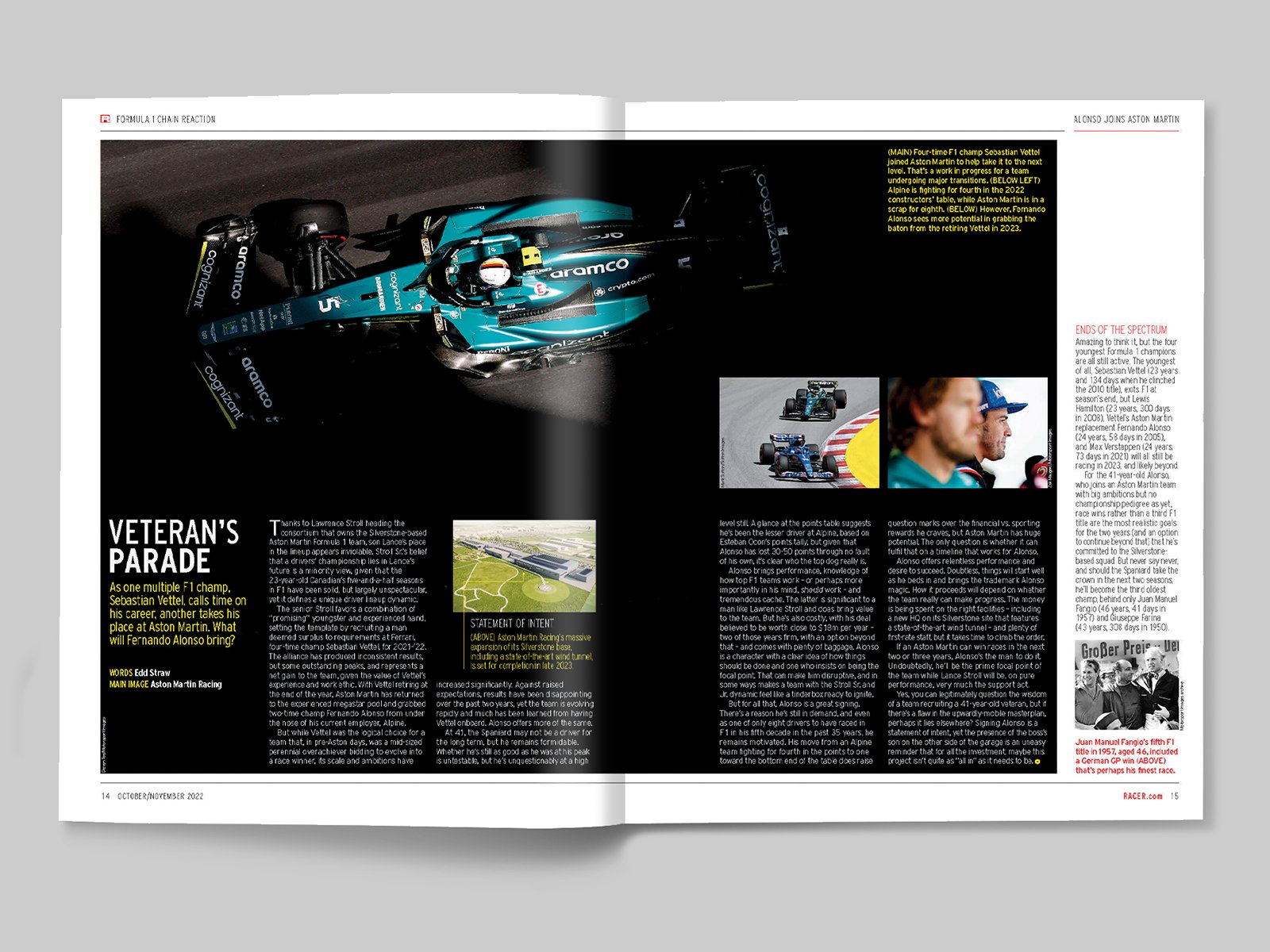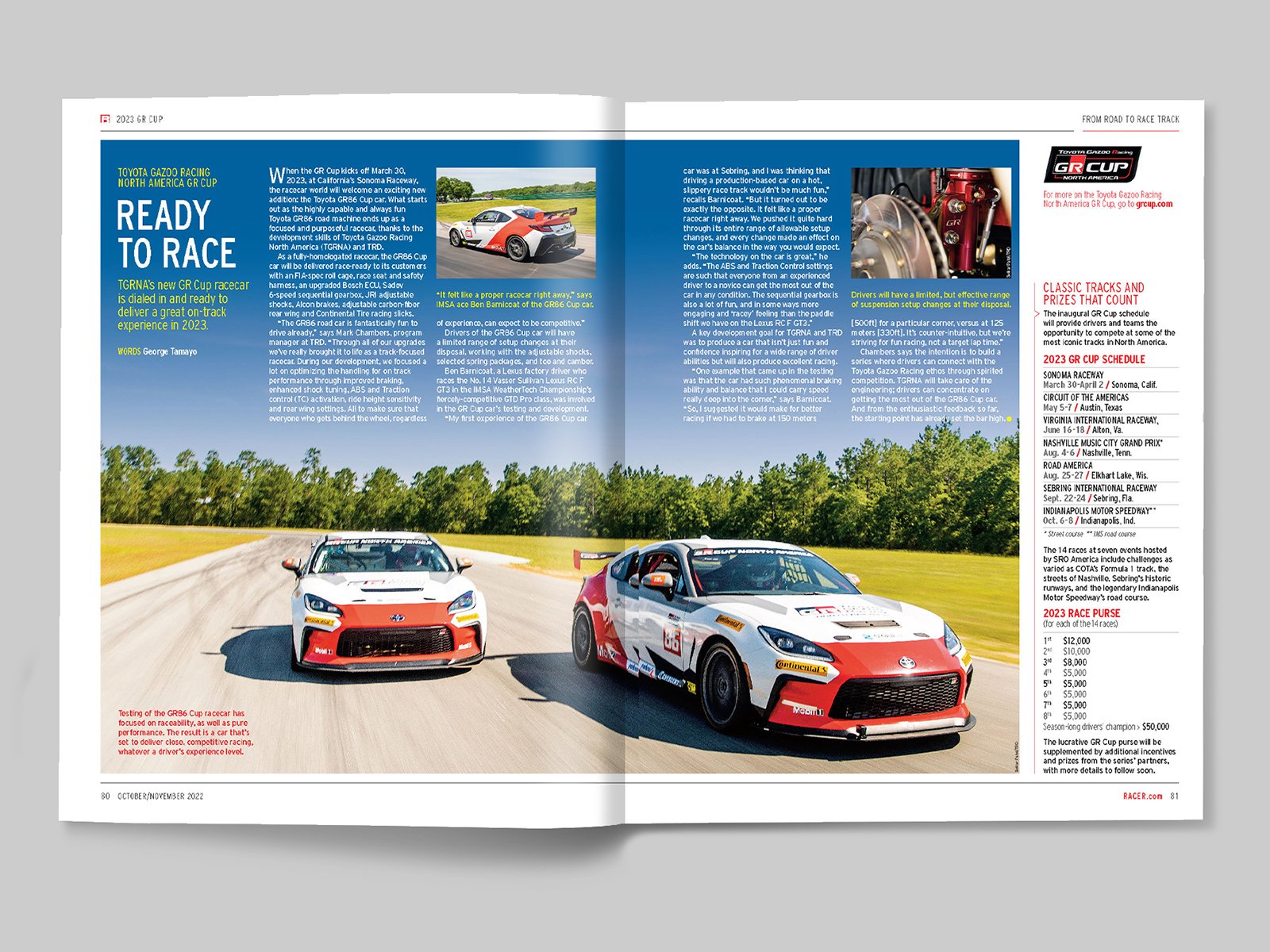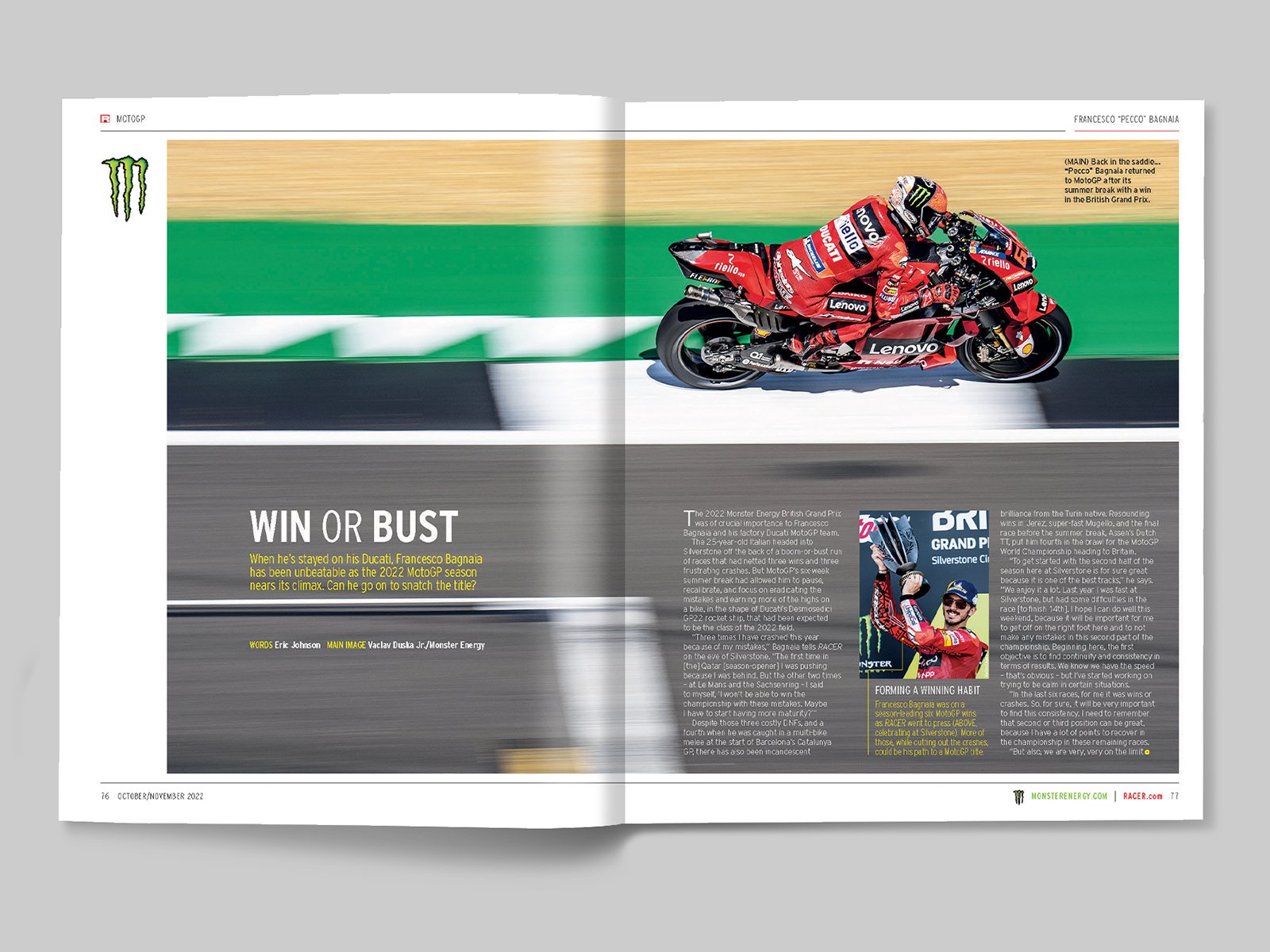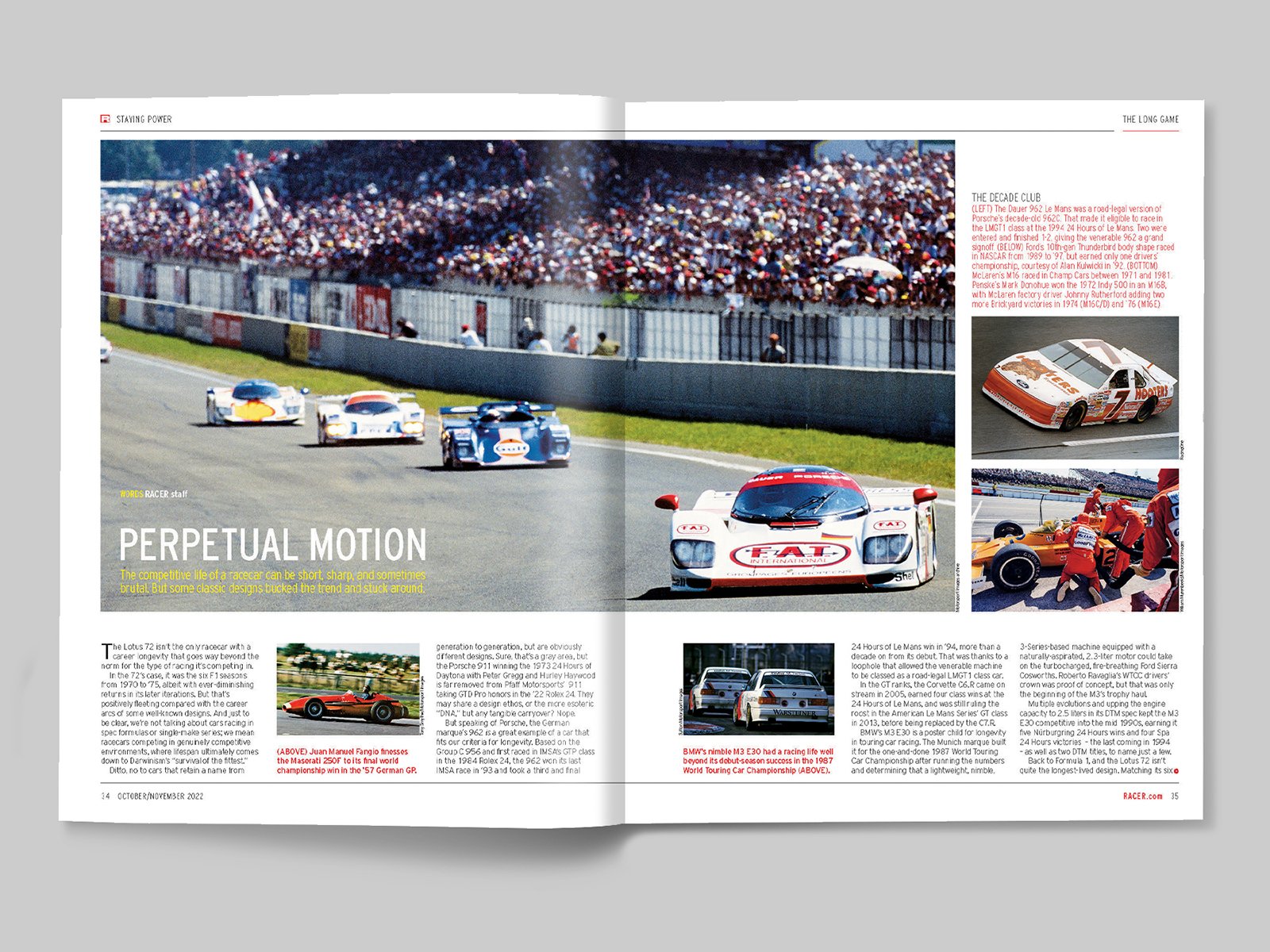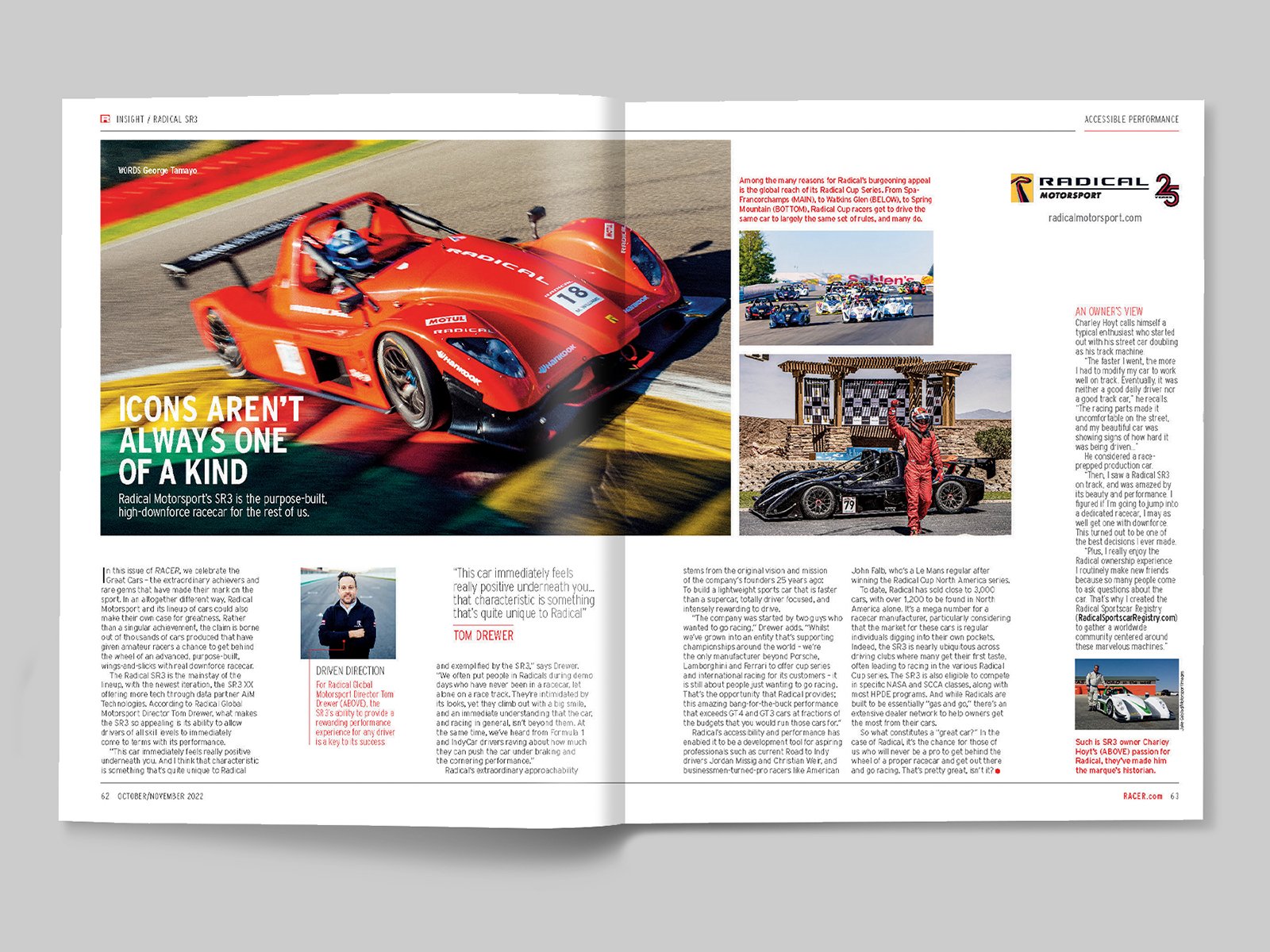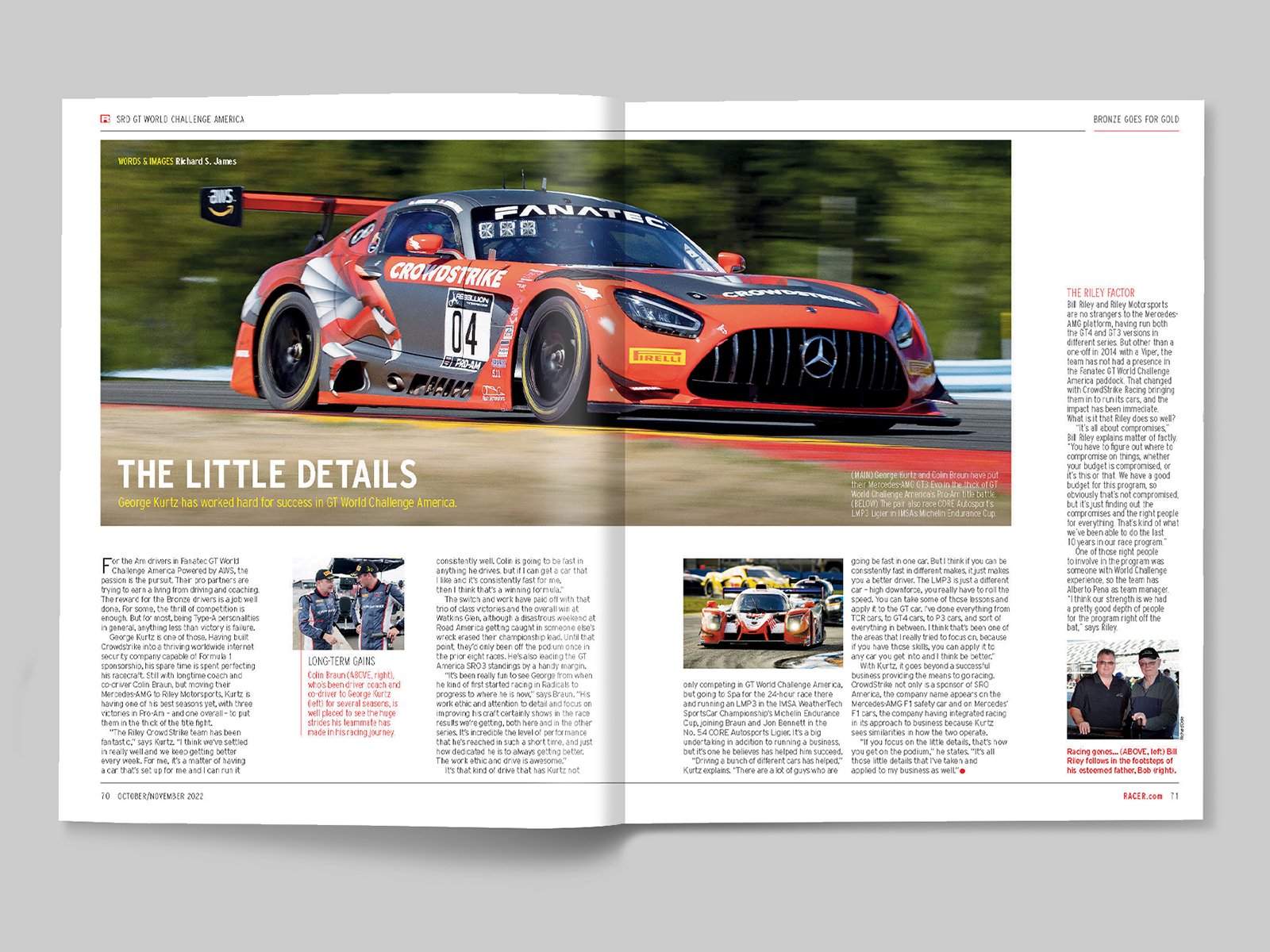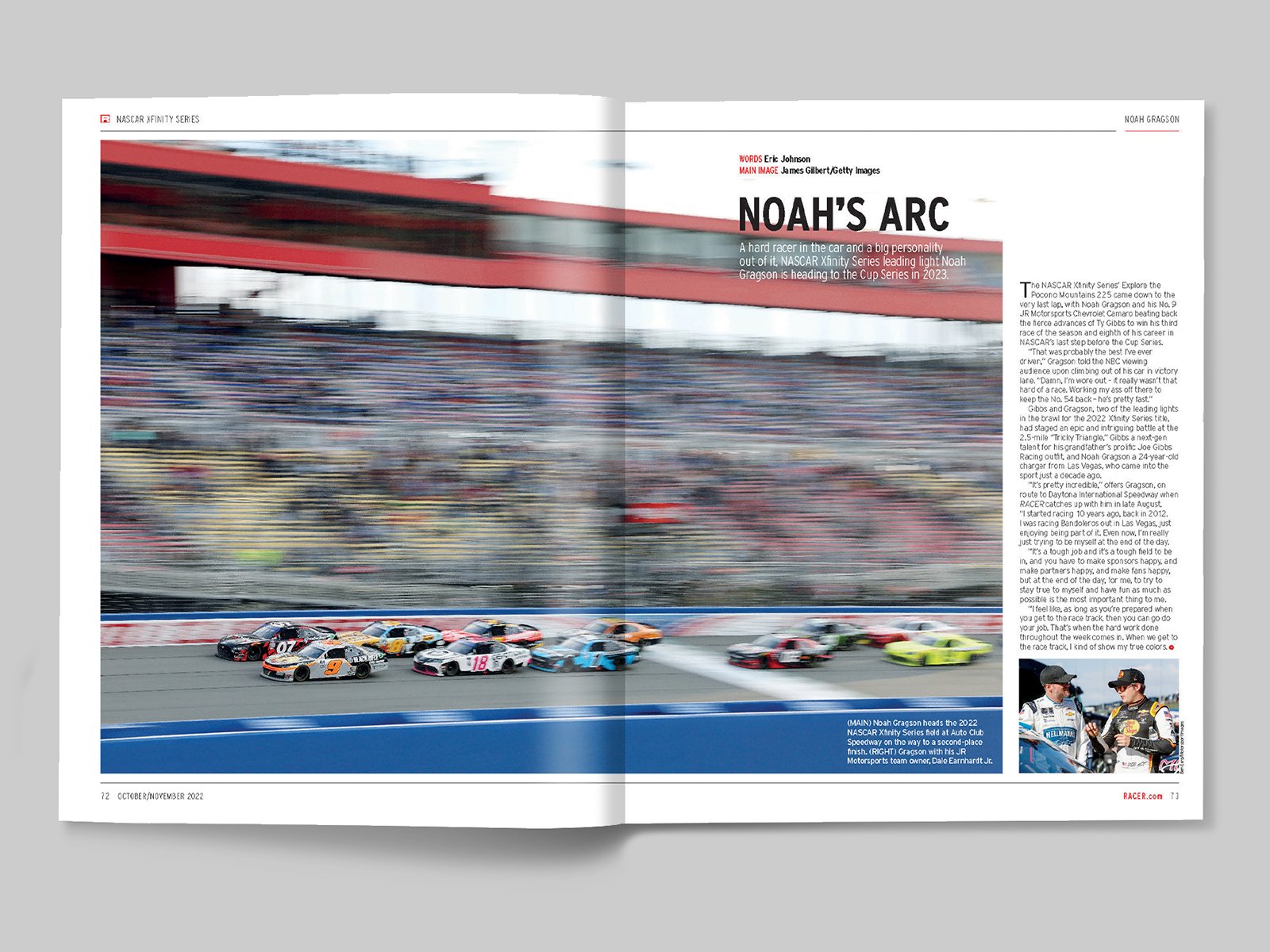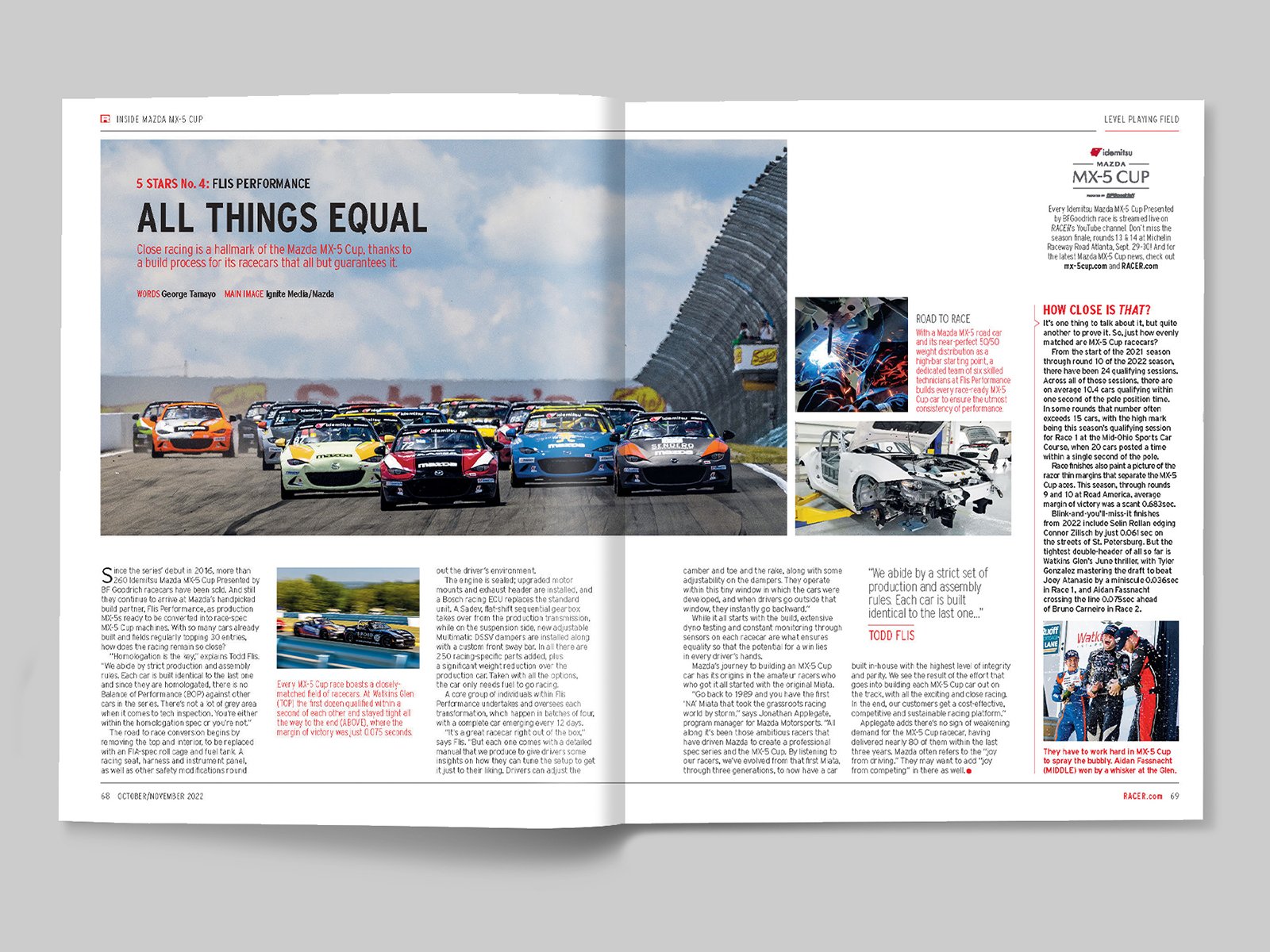Number 318: The 2022 Great Cars Issue
Define greatness. That’s usually the biggest problem with putting our annual Great Cars issue together – a bunch of people all with a different take on what constitutes “great.”
Sometimes it’s the transformative effect of a particular car. Sometimes the stats are impossible to argue against. But other times it’s a more esoteric take on greatness that gets our vote.
Cases in point: the Lotus 72 was hugely successful during a six-year Formula 1 career that netted two drivers’ championship and 20 grand prix wins in the early 1970s. But greater than that, it defined the direction of F1 cars all the way through to the advent of the ground-effect era, so that’s our transformative selection.
The Lotus 72 is also our cover car, with Ricardo Santos’s brilliant illustration showing what we feel is the definitive take on a classic design: Ronnie Peterson, 1973, and those morally dubious, but evocative John Player Special colors.
The Peugeot 905 Group C prototype is a car that meets our stats criteria. Nine wins from
17 starts, including two victories in the 24 Hours of Le Mans, against opposition as serious as Jaguar’s XJR-14 and Toyota’s TS010, ticks that box. Add in that it was faster than most of its F1 contemporaries, and that’s definitely great stuff.
And Swift’s late-1990s CART contenders? OK, four wins in three seasons, despite partnering mighty Newman/Haas Racing doesn’t make fora watertight case. But for us, the greatness of the 007.i, 009.c and 010.c comes from the “why” and the “how,” not just the “what.” An American junior open-wheel manufacturer wanting to challenge itself at the highest level in North America, against the might and experience of Reynard. We like that. It’s our esoteric choice.
We also looked at the current F1 turbo-hybrid era and decided 2020’s Mercedes F1 W11 was best of the breed – not just for the stats, but because of the way its designers found ingenious advantages, despite working with a rule book seemingly built to snuff out innovation. F1’s turbo-hybrids get a major makeover in 2026, which has lured in Audi (ABOVE). With a track record at Le Mans of pioneering diesel tech and taking the first hybrid win in 2012, can it raise the bar with its F1 designs, too? If so, it could be a future candidate for our Great Cars issue...
Beyond the issue theme, there’s plenty of other great reading, too, including insight on Formula 1’s driver chain reaction involving Sebastian Vettel, Fernando Alonso, Daniel Ricciardo, Oscar Piastri…and maybe a certain Colton Herta.
Add in a look at how IMSA’s GTD and new GTD Pro classes are playing together, an interview with MotoGP winning machine “Pecco” Bagnaia, and a meet-up with NASCAR rising star Noah Gragson, and we think you’ll enjoy a deeper dive.


